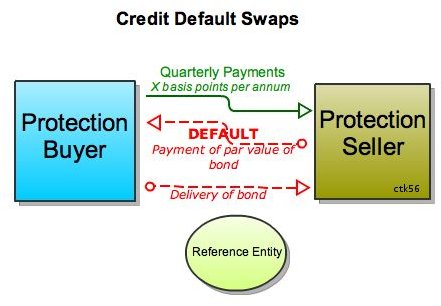Federal Wage Garnishment Law: Explanations and Sample Calculations
Understanding the Use and Misuse of Garnishment Orders

Employers should raise their awareness that federal wage garnishment laws are in place to provide consumer protection against predatory lenders.
Lawmakers have discerned that consumers could be easily swayed into making excessive purchases by way of credit. Credit extenders or lenders, on the other hand, could easily employ marketing strategies that would divert the consumers’ earnings to their business coffers–that is, if there are no state or federal wage restrictions imposed for garnishment proceedings.
Nonetheless, creditors traditionally make use of a garnishment order as a last resort and if they have reasonable proof that the borrower is shirking his obligation by:
- Deliberately refusing to pay the lender,
- Ignoring the lender’s written requests for the settlement of the account, or
- Repudiating any form of communication with the creditor.
In addition, the option is applicable only if the borrower has a bank account, a source of regular wages or a vehicle.
Image Credit:Ctk56 for Wikimedia Commons
How Are Garnishment Orders Processed?
You should know that garnishment orders are not easy to get, since lenders have to present their claims through a court of law. If the presiding judge determines the request for garnishment order as reasonable, the judge will order the borrower to appear at supplemental proceedings. The said proceedings will give the borrower a chance to air his side and to present information about his financial resources, particularly the salaries earned.
If the presiding judge deems it fit to issue a garnishment order, the exact amount of obligation due from the borrower and the corresponding interest rate will be indicated on the document. Thereafter, a copy will be given to the borrower while a sheriff will perform the task of presenting the order to the custodian of the borrower’s garnished asset.
Knowing the Guidelines & Restrictions of a Court Order for Wage Garnishment
In comprehending that the federal wage garnishment law is basically provided as a consumer protection, the following are the guidelines and restrictions to observe in determining the amount to be deducted from employees.
-
A copy of the wage garnishment order should be presented by a court-appointed sheriff to the employer who has jurisdiction over the payroll system of a business organization.
-
As employer, you will be required to withhold the amount necessary for purposes of satisfying the debt so stated in the garnishment document and as approved by a judge.
-
Orders to withhold shall apply to all employers and to all individuals who receive earnings or income in the forms of wages, salaries, commissions, bonuses and/or benefits paid as retirement fund contributions. However, take note that income earned as tips is not included or eligible as subject to wage garnishments.
-
The amount to be deducted in any pay period should not exceed 25% of the employee’s disposable earnings or the difference between the disposable earnings versus 30 times the federal hourly wage rate ($7.25 effective July 2009), whichever of these two has a lesser amount.
-
In calculating, take note that the disposable earnings here should be less than $290 ($7.25 x 40 hours), being the maximum wage earned per workweek by a minimum wage earner.

- A reference to disposable income denotes the portion of the remaining wages after all federal and statutory deductions, including orders of garnishments, have been applied. This further means that deductions for employee benefits shall not be included in determining the employee’s disposable income.
To illustrate the determination of garnishment limit, study the following example to determine which amount is lesser and therefore recognized as the maximum amount to be deducted:
Example A: Where disposable amount is less than $290
(a) Twenty-five percent of disposable income after state and federal taxes = $235 x 25% = $ 28.75
(b) The amount by which disposable income is greater than 30 times the federal hourly rate of $7.25
= $235 – (30 x $7.25) = $235 - $217.50 = $17.50
If the amount of periodic payment ordered is $25, the amount to be deducted should be for $17.50 only since this is the lesser amount. In effect, the employee will still have $217.50 as unencumbered salary.
Example B: Where disposable amount is more than $290
a) Twenty-five percent of disposable income after state and federal taxes = $375 x 25% = $93.75
(b) The amount by which disposable income is greater than 30 times the federal hourly rate of $7.25
= $375 - (30 x $7.25) = $375 - $217.50 = $157.50
In this case, the lesser amount to be recognized as the maximum deduction is item (a) $93.75. Hence, the employer can deduct the periodic payments of up to $93.75 to satisfy the debt being collected.
-
In the event that there is more than one garnishment to satisfy, the lower amount will still prevail as the deduction limit and the orders of garnishment shall be satisfied on a first-come, first-serve basis. In case the maximum amount of deduction is enough to cover more than one garnishment, the payment deductions shall be allocated accordingly.
-
However, if the garnishment is to satisfy the employee’s obligation to pay for child support and the employee is currently supporting a wife and child separate from the dependent whose support is being sought, federal wage garnishment laws allow up to 50% of the disposable amount of income. The law further allows up to 60% of the disposable income if there are no current dependents to consider .
To illustrate:
Using example A, the limit of child-support deduction from the salary of an employee who currently supports a wife and child is computed as follows: $235 x 50% = $ 117.50; if otherwise, $235 x 60% = $141.
-
If the employee has been in arrears of child support payment for more than 12 weeks, an additional 5% can be added to the garnishment deduction limit.
-
Keep in mind that the limits of deductions for garnishment orders do not apply to orders of garnishments arising from bankruptcy court rulings and for satisfying federal or state tax obligations.
-
In addition, if the employee wishes to authorize the employer to deduct more than the amount prescribed as the maximum deduction, then said maximum deductions do not apply.
-
Employers are prohibited from discharging or terminating employees who have wage garnishments ordered against them. Employers found guilty of violating this prohibition can be criminally charged and fined up to a maximum amount of $1,000 or be incarcerated for not more than one year or both.
The federal wage garnishment law does not affect or prevent the employee from complying with similar state laws that institute additional limits or prohibitions for deductions prescribed under similar circumstances. The rule of thumb is that in cases where restrictions for deductions are to be observed, the lesser amount prevails.
Image Credit: U.S. Navy photo by Chief Journalist Craig P. Strawser for Wikimedia Commons
Reference:
US Department of Labor: Wages and Hours Worked: Wage Garnishment lifted from https://www.dol.gov/compliance/guide/garnish.htm#who#who